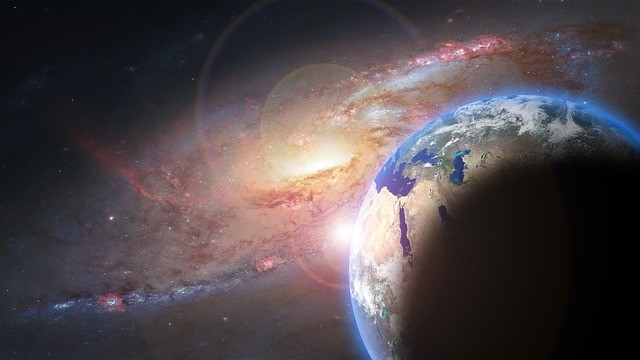
Earth was covered entirely by the ocean and had no continents at all 3.2 billion years ago, new pieces of evidence reveal. Scientists at Iowa State and the University of Colorado studied prehistoric samples of the seafloor in Australia and published the said discovery in the Nature Geoscience Journal this week. The discovery poses new questions on where and how life on Earth began, and how life forms evolved.
Scientists believe that 4.5 billion years ago, the Earth started as a molten sphere of magma that was thousands of miles deep. This came about from collision between dust and space rocks at high speed. After 1,000 to 1 million years, the magma cooled and formed the mineral crystals in Earth's crust.
Water may have been from ice-rich comets from outside our solar system, or it may have been from the dust of cloud particles. The Earth, being a hot magma ocean released water vapor and gases in the atmosphere. According to Benjamin Johnson, an assistant professor in the Department of Geological and Atmospheric Sciences at Iowa State University, and the lead study author, when the conditions got cool enough, it then rained out from the atmosphere. Johnson said they cannot pinpoint where the source of water is from, but suggested that regardless of where the source is, it was present when magma ocean existed.
The continents appeared later, thanks to plate tectonics movements that pushed rocky landmasses upward towards sea surfaces.

Earth was covered entirely by the ocean and had no continents at all 3.2 Billion Years Old, new pieces of evidence reveal.The discovery poses new questions on where and how life on Earth began, and how life forms evolved.
Clues of the ancient Waterworld, Johnson said, are being studied at Panorama district in the Pilbara Craton of Western Australia. The rocky scenery preserved a hydrothermal system from 3.2 billion years ago and isotopes of oxygen from the ancient ocean. The relationship between these isotopes can help scientists understand shifts in primordial ocean temperature and global climate.
Scientists discovered that when the Earth was 1.5 billion years old, oceans were swimming in isotope oxygen-18. Present-day oceans are known to have isotope oxygen-16. Continental land masses are known to suck oxygen-18 out of the water.
The ancient sample, however, had an abundance of isotope-18. The abundance of isotope oxygen-18 in the ocean implies the absence of continental landmass. Taking into consideration the ratio of the two isotopes at the time, Johnson explained that the difference in the value with the modern ocean can be explained by a lack of emergent continental crust at that time.
The idea that Earth was once covered entirely by the ocean has been proposed by other scientists previously, Johnson said. How much of the crust was visible above sea level was, however, the question.
This discovery of Earth being an ancient waterworld offers more intriguing questions: where and how did the earliest forms of life start? How did these life forms evolve?
Johnson explained that there are two major theories for the origin of life: hydrothermal vents and ponds on land. He also shared that if their study results are accurate, it would imply that there was a small or no environment on land where life emerged and evolved until sometime after 3.2 billion years ago.
© 2024 NatureWorldNews.com All rights reserved. Do not reproduce without permission.





